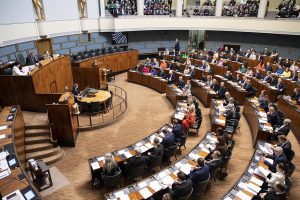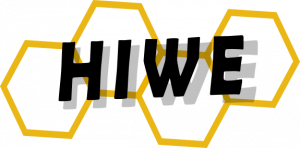Parliamentary elections 2023 are a tight battle between the largest parties – The election results will affect Finnish immigration policy
Finland is currently preparing for the 2023 parliamentary elections. Work-based immigration has become one of the key themes in the debate. The election results will impact considerably what kind of immigration and integration policy Finland will pursue for the next four years. This post takes a look at what the three parties competing for the win are aiming for in their election manifestos.
The election debate is heating up
According to election polls, three parties are fighting for victory in the Finnish parliamentary elections: the right-wing National Coalition (‘Kokoomus’), the left-wing Social Democrats (’SDP’), and the populist Finns Party (‘Perussuomalaiset’, ‘PS’). The first two are traditional parties in the Finnish political map with more than one hundred years of history behind them, whereas the Finns Party is a relative newcomer (est. in 1995), with a turbulent recent history and an internal break-up.
The support of the parties is almost level a few weeks before the elections, at around 20 percent, and there is a tight race for the position of the next prime minister.
Key election themes have been the economy, health and social services, and work-based immigration. In the election debates, the discussion has on several occasions heated up to the point of a virtual shouting match, especially between Sanna Marin, the Prime Minister and Chair of the Social Democrats, and Riikka Purra, the Chair of the Finns Party.
In the debate, the Social Democrats have strongly supported work-based immigration and connected it with the question of equal human dignity. Finns Party has opposed work-based immigration on the basis of immigrants having insufficient skills and lack of knowledge of Finnish language.
The National Coalition seeks economic growth and pushes for budget cuts
In its election manifesto, National Coalition emphasises securing the conditions for economic growth and at the same time pushes for cuts of billions of euros for the next election periods. Savings are sought, among other things, by tightening unemployment and social benefits. However, the party wants to invest in education and high competence and adhere to Finland’s climate commitments. National Coalition believes that sustainable climate and energy solutions offer Finland new opportunities for economic growth. In immigration policy, the party supports increasing work-related immigration, but warns against “traveling down the same road as Sweden.” The party wants to tighten the requirements for integration, for example make language learning more mandatory.
The Social Democrats pursue value politics
The Social Democrats in turn emphasise that elections are about choices between values. The party is not ready for the level of budget cuts driven by National Coalition but prefers to talk about sustainable growth and raising the employment rate. In its long and detailed election manifesto, the party presents plenty of other valued goals, for example the promotion of education, high competence, culture, democratic participation and holding on to Finland’s strict climate objectives. The party also highlights the skills shortage and states that in order to fix it, the opportunities of both education policy and increasing work-based immigration must be used. The Social Democrats also want to further integration by e.g. promoting opportunities for family reunification.
The Finns Party opposes ”harmful immigration”
The Finns Party differs significantly from other parties on several issues, especially immigration. The party has not prepared a separate election manifesto. Instead, it has announced an extensive immigration policy program, on which the vast majority of its election goals are based. Taking Sweden as a cautionary example, the Finns Party says it wants to limit ”harmful immigration” and reduce related financial costs and social problems. In work-based immigration, the party wants to continue labour market tests for workers coming from outside the EU and ETA area. It sees the income limit should be strict and family reunification should be avoided. In humanitarian immigration, the party wants to move ”from integration to exportation” of refugees back to their home countries. Moreover, the Finns Party suggests tying social benefits to citizenship, which is one example of its outspoken “Finland and Finnish people first” ideology.
Most smaller parties support work-based immigration
A total of 22 parties are running in the 2023 elections. In the past parliamentary term, in addition to the aforementioned bigger parties, a number of smaller parties have sat in the parliament: the Centre Party (previously one of the traditional big parties in Finland), the Greens, Left Alliance, the Swedish Party in Finland, the Christian Democrats and the ’pseudo-party’ Liike Nyt (’Movement Now ’). In general, all parliamentary parties except the Finns Party support work-based immigration, and the left-wing parties also advocate humanitarian immigration and the allocation of additional resources to further integration. Among the smaller parties, the Left Alliance and the Swedish Party have published their extensive election programs also in English. (See links below.)

Election debates in several languages
It is clear from the interviews conducted by the HIWE project and the discussions on social media that many highly skilled internationals feel that things in Finland change slowly, if at all. Yet change is still happening, although it is not always easy to see. In these elections, it has been interesting to notice that the election manifestos of many parties have been translated into several languages. In addition, for the first time, YLE organises election debates in various languages besides Finnish and Swedish: in English, Russian, Arabic and Somali. Information about the Multilingual Election Discussions and their schedules can be found on YLE’s website.
Moreover, the Finnish news media Ilta-Sanomat and the leading peace mediation organisation CMI – Martti Ahtisaari Peace Foundation have presented an innovation to the traditional election debate concept. The idea is that instead of arguing and bickering, the candidates are expected to start co-creating solutions to acute problems peacefully. In this spirit, Ilta-Sanomat and CMI organised a ”Peace Debate”, where candidates were measured by their ability to show empathy, build trust and find win-win outcomes. You can read more about the debate here.
Less than half of foreign language speakers voted in the last parliamentary elections
Considering how tight the battle in this year’s elections is, 2.5% share of the votes can make a real difference to the election results and thereby to the formation of the new government.
If you would like to vote, you can search for candidates on the parties’ websites or on the online voting compasses produced by several media, such as the one from YLE (service available in several languages).
More information on the elections
General election info on the Ministry of Justice website
Political parties’ (currently represented in the Finnish parliament) election manifestos
Kokoomus – National Coalition Party (the full manifesto available in several languages)
SDP – Social Democratic Party of Finland (the full manifesto available in several languages)
PS – Finns Party (brief general info on the party in English, there is no actual election program)
Keskusta – The Centre Party (‘campaign promises’ in English; a longer version of the manifesto available in Finnish and in Swedish)
Vihreät – the Greens (an abbreviated version in English; the full manifesto available in Finnish and in Swedish)
Vasemmistoliitto – Left Alliance (contains a link to the full manifesto in English; also available in Swedish)
RKP – Swedish Party in Finland (contains a link to the full manifesto in English; also available in Finnish and Swedish; abbreviated versions available in several other languages)
KD – Christian Democratic Party in Finland (an abbreviated version in English; the full manifesto available in Finnish and in Swedish)
Liike Nyt – ‘Movement Now’ (election manifesto available in Finnish only)
The advance voting period for the elections is from March 22 to March 28, 2023. The actual election day is on April 2, 2023.
